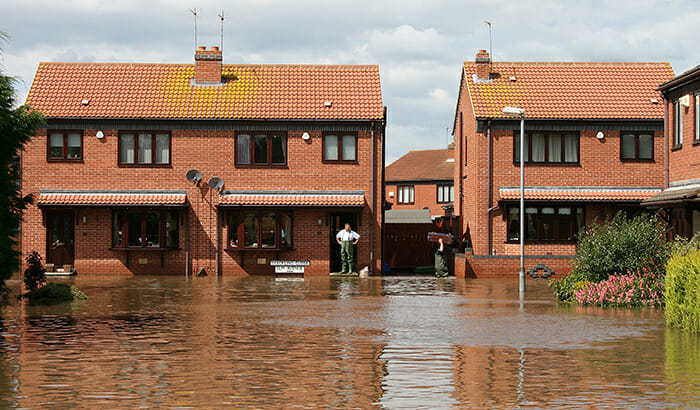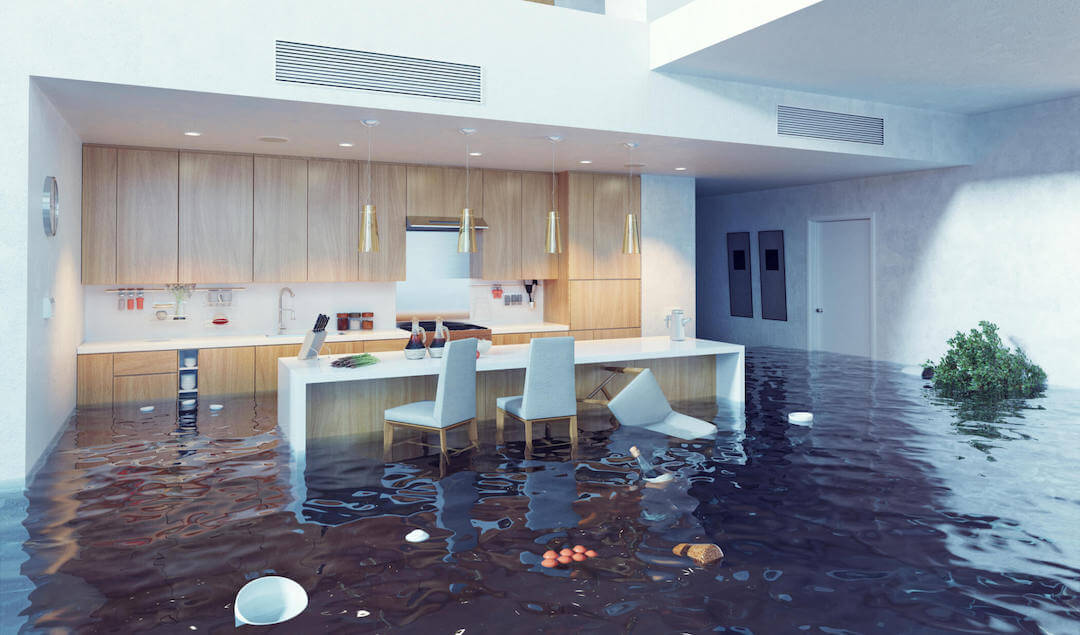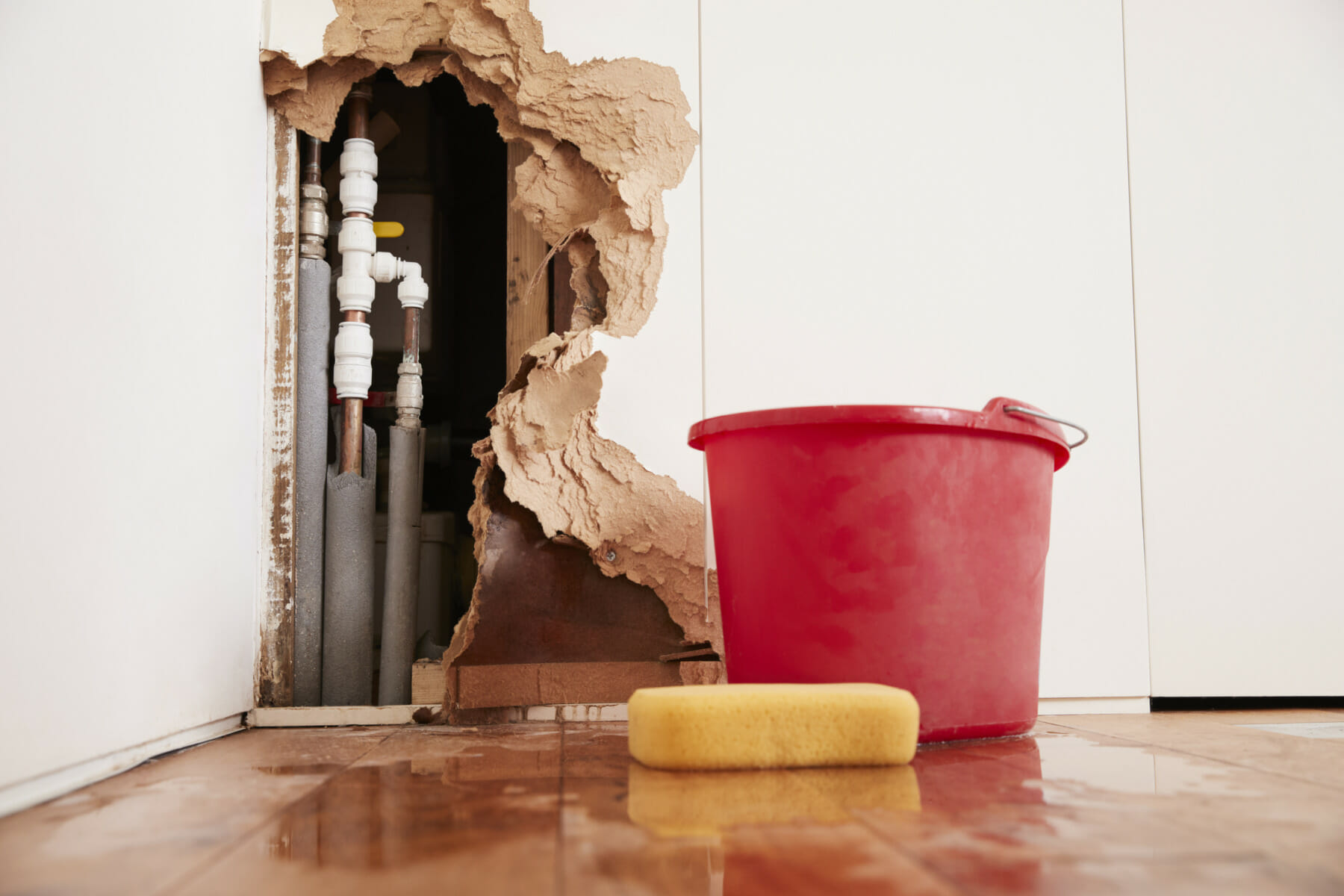Every year, Utah homeowners gear up for the annual winter thaw. Fast melting snow and spring rain places massive stress on homes and commercial buildings.
Tiny leaks, damaged roofs, burst pipes, and faulty HVAC systems can cause extensive water damage, mold growth, and thousands of dollars in repair fees. Even the smallest water leaks can wreak unimaginable havoc on your home (and pocketbook).
According to the Insurance Information Institute, about 1 in 50 insured homeowners make a property damage claim citing water damage or freezing with an average of $10,849 per claim every year. This figure doesn’t account for the number of uninsured homes with water damage or homeowners that choose not to file a claim.
As daunting as water damage can be, knowing how to protect your home will help minimize the risk of damage. Take a few extra precautions this spring to avoid incurring water damage in your home.
The water damage restoration specialists at Bull Matrix Restoration compiled a list of steps and tips to help you get started.
How to Prevent Water Damage
As spring weather melts Utah’s infamous winter, water can seep its way into your home. While it is impossible to prevent water damage completely, preparing your home can help protect it from the most common water damage causes.
Follow these spring cleaning tips to protect your home from water damage.
- Clear any winter debris from your roof.
- When snow collects on your roof, It can cause ice dams. Inspect your roof for any structural damage that might have occurred over winter.
- Prevent water from seeping into the foundation by clearing dirt or snow away from the foundation of your home.
- Keep window wells and gutters clear of debris to allow unobstructed water flow as snow melts, and spring showers occur.
- Check your basement for any water leaks. Ensure the basement floor, walls, windows, and doors properly seal.
- Install or test your sump pump.
Along with clearing your home of winter woes, here is a quick list of the most notorious areas in the home that you should check.
- Check Water Pumps: Ensure that you have a sump pump or sewer backflow valve installed. You should also keep a battery-operated backup system in case you experience a power failure. Another option you can consider is a water alarm that signals you of any water overflow collecting in your basement.
- Clean Underground Areas: Basements are the most susceptible area in your home for water damage. You can prepare for spring thawing by cleaning out your basement. We recommend keeping your basement clean and organized. Also, keeping access points, shut off’s and pipes free and easily accessible will allow for quicker access in case of an emergency.
- Remove Debris: Remove any collected debris from gutters, window wells, and downspouts.
- Check Doors and Windows: Ensure that there are no leaks around your doors and windows. Each door or window should seal tightly when closed.
- Revitalize Exterior Walls: The exterior walls of your home keep it safe from outside elements. As the weather warms, venture outside to check that all exterior walls are well-painted and sealed.
- Check Flood Drains: Not all homes have flood drains. If you do, ensure all drains work properly. If not, consider installing flood drains.
- Seal Foundation Cracks: Inspect your home for any foundation cracks or enlist the help of a professional. These cracks indicate future water seepage that leads to major damage above and below the surface. A restoration company can seal any foundation cracks found in your Utah home.
- Anchor Tanks: Permanently anchor fuel and water tanks to protect from tipping over during an earthquake.
- Inspect Grading: Inspect the grading around your home for any changes that occurred during the winter. Your grading should push water flow away from your home. If you notice any discrepancies, make the necessary change.
- Update Landscaping: Along with checking grading, trim trees and bushes away from your home and keep plumbing and piping clear and easily accessible.
- Inspect Roof: Insurance companies expect homeowners to maintain the roof to prevent water damage caused by melting snow or rain. If you fail to do your duty, your insurance company might not pay to repair any damage. Protect your home by keeping your roof clear of any debris. You should also inspect and maintain it throughout the year, especially as spring approaches.
Along with performing a quick home inspection, a few areas will require a deeper look. Take a look at these appliances to ensure proper maintenance.
Washing Machine Hoses
One of the most common sources of water damage in the home is washing machine hoses. These hoses are constantly under pressure, causing them to weaken over time. Unfortunately, not many homeowners know that they should check their washing machine hoses regularly.
You can prevent a burst by checking yours once or twice a year. Turning your hose valves off when you aren’t using your washing machine can also reduce water pressure and minimize the risk of damage.
Also, replace your washing machine hose every five years. Our water damage restoration specialists in Utah prefer wire-braided, high-pressure hoses. Find them at any hardware supply store, or ask an expert at your local home appliance store for guidance.
Common Appliances and Fixtures
Small, slow leaks could be causing damage beneath the surface. Unfortunately, many insurance policies won’t cover water damage that results from poor maintenance. It is up to you to check your appliances regularly for any signs of leaks or damages.
Start the process by checking water line connections attached to kitchen appliances, including your dishwasher, refrigerator, reverse osmosis line, or other water lines. Also, ensure a gap of three to four inches between these appliances and the accompanying wall.
Then, inspect all areas of your home, noting any leaks, drips, or signs of moisture– spots to pay close attention to include ceilings, sinks, toilets, and water pipes. Immediately fix any water leaks to prevent serious water damage and mold growth. You can enlist the help of a water damage professional who will replace damaged hoses and ensure proper water flow.
Roofs
As warm air melts the snow on your roof, ice dams can form. If you don’t remove ice dams, your roof can collapse and flood your home. To ensure your roof is ready for the upcoming warm weather, have your gutters and downspouts cleaned, inspected, and repaired. Clear, clean gutters will ensure that water will flow down and out your drain system unobstructed.
Other steps to take to prevent water damage from a damaged roof include:
- Properly insulate and seal your attic.
- Keep your roof cool by providing enough ventilation to the attic.
- Remove any snow from your roof if it is more than six inches deep.
- Install a water membrane or snow shield underneath your roof shingle to prevent water seepage.
- Install gutter screens to minimize debris build-up and damage.
- Have a professional check your roof for damaged or missing shingles, weakened flashing, collecting water and missing granules.
More Tips to Prevent Water Damage
Along with preparing for spring thawing, you should maintain your home to prevent water damage. A few of the tips our water and flood restoration specialists recommend include:
Regularly clean gutters and downspouts.
If you notice any bird nests, leaves, grass, sticks, or debris, remove them as quickly as possible. This debris could block water flow and cause damage to your roof or side of your house. As you clean your gutters, check for any damage, like cracks or sagging. If anything seems out of the ordinary, contact a repair professional.
Check Downspout Placements.
Regularly check your downspouts. Each should extend at least 10 feet away from the foundation of your home. The ground surrounding the downspout and foundation should also have a slope of at least six inches over a 10-foot span to avoid flooding.
Install Back Flow Valves and Standpipes
Along with installing a sump pump, as discussed earlier, you should also install backflow valves and standpipes. These backup devices attach to basement drain locations, sinks, and toilets to automatically prevent sewage from backing up.
Prevent Sink Clogs
Stop pouring grease down your sink. The grease can cling to pipes and cause clogs that are nearly impossible to repair without replacing pipes. Our water damage experts recommend dispensing grease by pouring it into an empty can and throwing it in the trash.
Check Your Water Bill
Your water bill is a good indicator of how your piping is running. While your water bill usually increases in the summer from watering your lawn, it shouldn’t get unusually high. If you notice a significant discrepancy, you could have a leaky pipe. Hire a professional to inspect and repair any leaks or damaged pipes.
Turn Off Your Water Supply
If you are going on vacation, turn off your water supply valve. Doing so could prevent flooding from occurring while you are out of town. Even if you aren’t planning on going anywhere, we recommend checking to make sure that you can turn all of your supply valves on or off as needed.
Water Damage Restoration Services at Bull Matrix
If you have water damage in your home, you need to act quickly. Standing water can lead to mold, cause allergies or serious illnesses, and hurt your wallet.
Bull Matrix is the professional restoration service you need to get your home back in tip-top shape. As one of Utah’s most reputable floor restoration companies, we have the repair services required to complete your water damage restoration as quickly as possible.
Call Bull Matrix Restoration for emergency water damage and flood restoration services.




